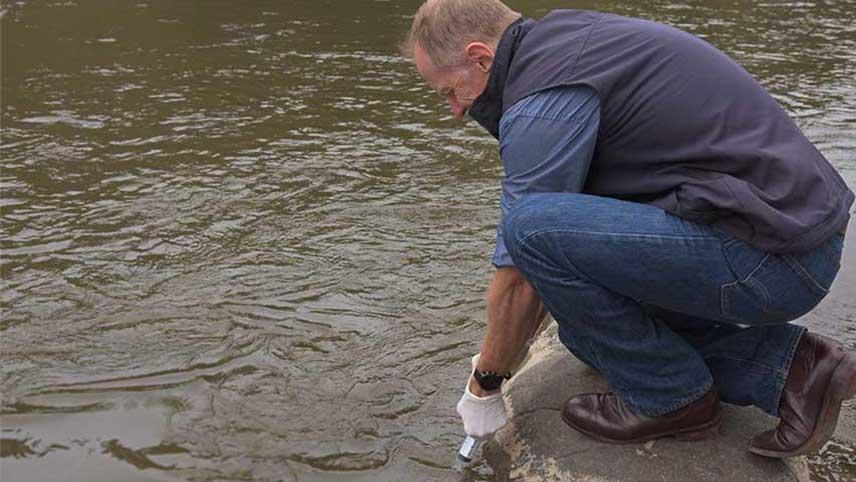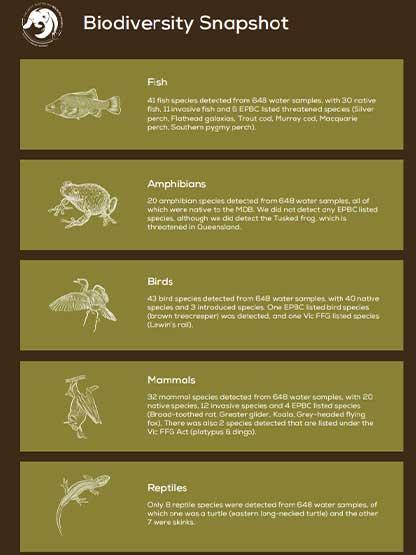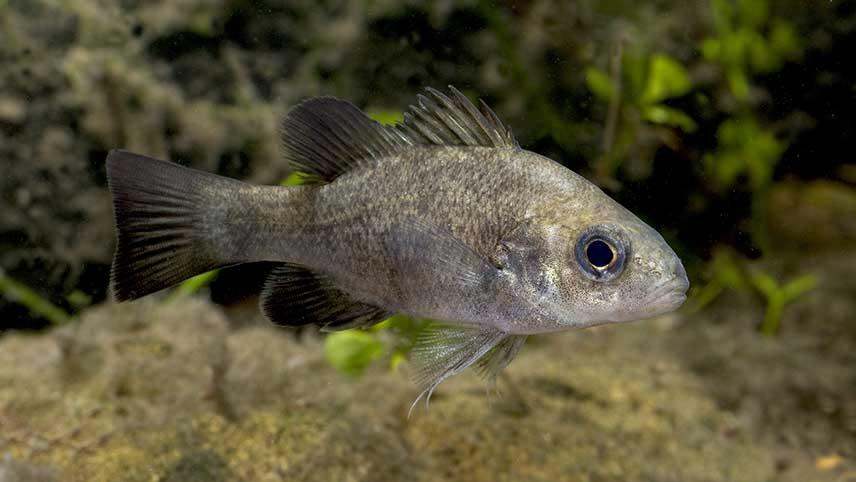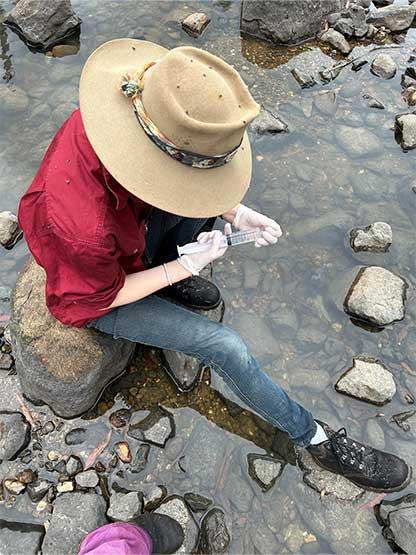
The Great Australian Wildlife Search is running again, from 1 October to 30 November 2024. Repeat eDNA sampling in many of the same locations as 2023 will be undertaken to help determine baselines for ecological health. Repeat sampling also detects change over time. As well as this, new locations have been identified that were not sampled in 2023, to assist with developing a full picture of species distribution across the Murray–Darling Basin.
Environmental DNA (eDNA) technology detects DNA that animals shed into their environment. Scientists use this information to identify and locate where species are found. The Great Australian Wildlife Search is using citizen scientists as detectives, collecting water samples in their local waterways to test for eDNA.
During 2023 citizen scientists took samples across 324 locations in the Murray–Darling Basin. The samples identified 144 species, including 17 threatened and 26 invasive ones.
Environmental DNA monitoring can identify information about threatened species. This will help the Murray–Darling Basin Authority (MDBA) and river operators make better water management decisions to support them.
Some of the threatened species identified in 2023 included:
- Fish - silver perch, flathead galaxias, trout cod, Murray cod, Macquarie perch, southern pygmy perch
- Amphibians – tusked frog
- Birds – brown treecreeper, Lewin’s rail
- Mammals - broad-toothed rat, greater glider, koala, grey-headed flying fox, platypus, dingo.


Eleven invasive fish species were also detected in the Basin. The most abundant invasive fish species detected included gambusia, goldfish, carp and trout. Unfortunately, oriental weatherloach and roach were found in new waterways. This may mean they are spreading. In positive news, tilapia were not detected at any sites. Tilapia are a popular aquarium fish. When released into our waterways, they threaten native fish and their habitats.
The Great Australian Wildlife Search and eDNA technology are a gamechanger for conservation – helping to inform new and existing programs to protect Australia's most important ecosystems.


The 2024 Great Australian Wildlife Search is delivered by the Odonata Foundation in partnership with EnviroDNA, Patagonia and Illumina. The project is being funded through the MDBA’s Basin Condition Monitoring Program (BCMP), which is an Australian Government commitment through the Murray–Darling Communities Investment Package [PDF, 230KB] and aims to develop new economic, social and environmental monitoring and reporting methods for the benefit of the Basin and its communities. The outcomes of the BCMP will inform the 2025 Basin Plan Evaluation and the 2026 Basin Plan Review.